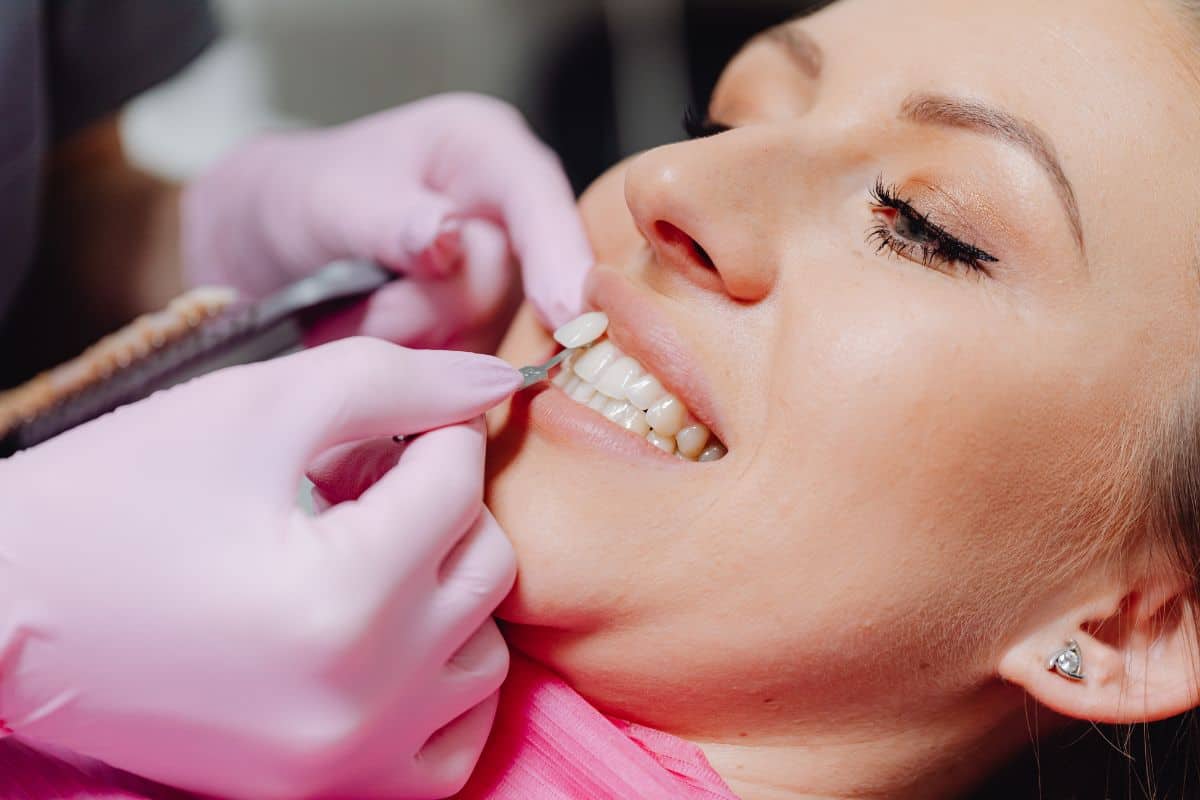Are veneers covered by Medicaid insurance?
As we get older, our bodies need more and more care.
Sometimes this means improving how we eat and regulating how much exercising we do, sometimes this means replacing or taking out certain aspects of our body.
For some people, this is an absolute necessity. If you are unable to walk because of a completely run down knee joint, then you should be able to get it.
However, some people don’t have the resources to be able to get these things, and that is where Medicaid comes into play.
This government service is a life changer for many people, yet it is quite limited in what it can cover. As such, you need to do your homework before using it.
Especially when it comes to dental hygiene. For example, if you wanted veneers, would you be able to get them on Medicaid? Or would that be considered an unnecessary expense.
Today, we are going to find this out for you.
Table of contents
What is Medicaid?

Medicaid is a public federal and state health insurance program that is run by the United States government.
It offers to help cover health care costs for people with low incomes, limited incomes, or limited resources of their own.
Although it is similar to medicare in the way it is run, there are some slight differences.
Medicaid is normally for people who are struggling on low incomes, meaning they cannot afford the normal healthcare premiums provided elsewhere, whereas medicare is primarily for people over the age of 65 and people who are vulnerable, either physically or mentally, and need assistance.
Medicaid offers slightly different benefits from medicare as well, with some benefits not offered to medicare recipients at all, such as nursing home care and personal care services.
Unlike medicare as well, there is no need for an amount to be paid into Medicaid, rather you meet the threshold for coverage by your monthly or yearly income amount.
Approximately 1 in 5 (23%) Americans are covered under Medicaid, making it the largest healthcare provider in the states today, with just over 74 million Americans using Medicaid for their healthcare needs.
To meet the demand, the federal government and the state governments provide funding to the program, with the majority of funding coming from the federal government.
What are Veneers?
Veneers are thin, custom-made, porcelain panels that are placed on the front of your teeth to improve tooth shape and color and restore natural tooth aesthetics.
Most of the time, they are used to either hide a crack or hole in the tooth or to protect the teeth from further damage.
Veneers are used to correct a wide range of dental and aesthetic problems, including:
– Discolored teeth:
– Cracks in teeth:
– High spots on teeth.
– Thin, damaged teeth.
– Malformed teeth.
In essence, they act kind of like fillings for the outside of the tooth.
While fillings are used to fill cavities inside teeth, to stop them from growing and from stopping further problems developing from the hole drilled into your tooth, veneers are used to cover the tops of teeth.
Like fillings, this is done so that when the problem is dealt with, there is a kind of shield against potential future problems with the tooth’s exposed weakness.
Can you Get Veneers on Medicaid?
But now, are veneers covered by Medicaid?
Currently, veneers are not covered by Medicaid. Veneers are not viewed as an essential service to maintain someone’s health and, as such, they are not viewed as necessary.
Instead, they are put under the category of a ‘cosmetic procedure’, which while making your teeth appear pretty, is unnecessary.
This is in a similar vein to how hearing aids and cochlear implants are viewed in medicare plans.
A cochlear implant is covered because it is viewed as a life-changing procedure for severe deafness, whereas hearing aids are not covered, because their effectiveness is only up to moderate hearing loss.
Even though hearing aids are life-changing, they are viewed as unnecessary.
In fact, a lot of dental procedures are not covered by Medicaid.
Since there are alternatives, like dentures, fillings, or just no teeth at all, and you can still live a relatively normal life with the alternatives, dental procedures are clamped down upon in Medicaid.
This is incredibly unfortunate and often does affect people’s quality of life, but it is the state and federal governments who provide the decision on what things people can live without, and one of them is dental coverage.
Other Ways to Pay for Veneers

If you don’t have the money to get veneers on your own, there are a few other things you can try. Some of these include:
– Apply for a dental discount card – Many dental discount cards are available to help you save money on your dental work.
However, some of these also cover orthodontics and some even cover cosmetic work such as Botox and teeth whitening.
– Consider private insurance – Some private insurance companies are willing to cover cosmetic work such as veneers.
You will want to make sure you check with your insurance company to see if this is covered. Though, this can be very expensive.
– Get help from other places – If you desperately need veneers or other dental procedures, and it is affecting your quality of life, then it might be time to ask for help.
There are many charities that could help, and you could even get help from a go-fund-me page, if it comes down to the line.
– Get them done elsewhere – We don’t want you to go to a very badly run clinic anywhere, but if you can find a reasonably priced well run clinic to go get dental work done abroad, we say take it.
Times are tough and sometimes it’s best to find help from another place rather than wait for help where you are.
Conclusion
Unfortunately, Medicaid won’t cover veneers. They are considered a cosmetic procedure and so the government won’t fund them.
Therefore, if you are desperate, you need to find your own way of funding your surgery. It may be tough, but you may find just the kind of help you are looking for.
Frequently Asked Questions
The bottom line. Dental veneers cost between $800 and $1,800 per tooth, on average, depending on the material used. Multiplying that cost by the number of teeth to be treated means that dental veneers get expensive quickly. Veneers are a cosmetic treatment, so they are not covered by insurance.
Veneers and Lumineers address most of the same concerns, but they have some crucial differences. Veneers need more preparation, are more invasive and irreversible, but they can address more cosmetic concerns. Lumineers are reversible and don’t require preparation, but they’re not suitable for all cosmetic concerns.
The lifespan of dental veneers depends on whether you have porcelain or composite veneers, and how well you care for them. Porcelain laminate veneers can last from 10 to 12 years. Composite resin veneers need to be replaced sooner, since they last for around 4 to 8 years.
